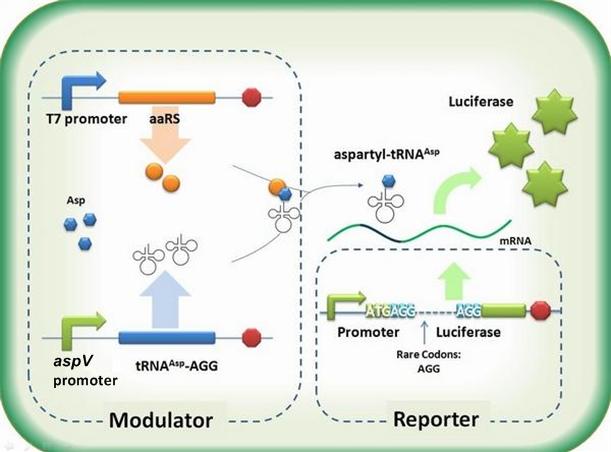|
|
Rare-Codon Switch
aaRS Modulator + Reporter for Quantitative analysis

Results
After the qualitative analysis of aaRS Modulator, we stepped further to analyze aaRS Modulator with quantitative test. We have used PT7-Luc-4AGG ([http://partsregistry.org/wiki/index.php?title=Part:BBa_K567009 BBa_K567009]) as our Reporter to test the function of PT7-TDRS ([http://partsregistry.org/wiki/index.php?title=Part:BBa_K5670011 BBa_K567011]) and tRNAAsp-AGG ([http://partsregistry.org/wiki/index.php?title=Part:BBa_K567012 BBa_K567012]). Results are shown below.
 fig 1. Functional Analysis of aaRS Modulator + Reporter for Quantitative Analysis. ER2566 cannot produce luciferase with PT7-Luc-4AGG ([http://partsregistry.org/wiki/index.php?title=Part:BBa_K567009 BBa_K567009]) only. When tRNAAsp-AGG ([http://partsregistry.org/wiki/index.php?title=Part:BBa_K567012 BBa_K567012]) and PT7-TDRS ([http://partsregistry.org/wiki/index.php?title=Part:BBa_K5670011 BBa_K567011]) are co-transformed into the cell, luciferase is produced. The results proved that aaRS Modulator can regulate protein biosynthesis along with consecutive AGG codons. From data however, we noticed that though aaRS Modulator can act as a regulating tool, it is not as effective as tRNA Modulator. We need to further optimize this Modulator in the future.
|